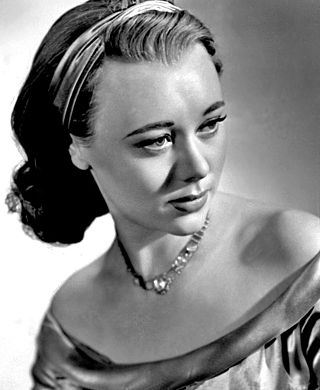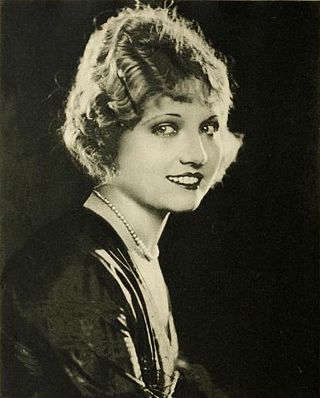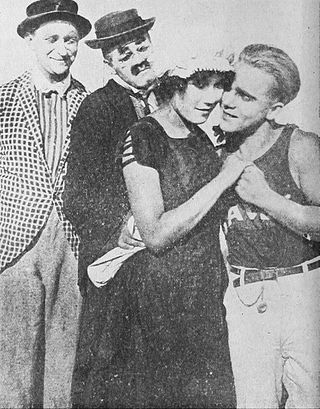Related Research Articles

Hattie McDaniel was an American actress, singer-songwriter, and comedienne. For her role as Mammy in Gone with the Wind (1939), she won the Academy Award for Best Supporting Actress, becoming the first African American to win an Oscar. She has two stars on the Hollywood Walk of Fame, was inducted into the Black Filmmakers Hall of Fame in 1975, and in 2006 became the first Black Oscar winner honored with a U.S. postage stamp. In 2010, she was inducted into the Colorado Women's Hall of Fame. In addition to acting, McDaniel recorded 16 blues sides between 1926 and 1929 and was a radio performer and television personality; she was the first Black woman to sing on radio in the United States. Although she appeared in more than 300 films, she received on-screen credits for only 83. Her best known other major films are Alice Adams, In This Our Life, Since You Went Away, and Song of the South.

Glynis Margaret Payne Johns is a British retired actress, dancer, musician and singer. In a career spanning eight decades on stage and screen, Johns appeared in more than 60 films and 30 plays. She has received various accolades throughout her career, including a Tony Award and a Drama Desk Award as well as nominations for an Academy Award, a Golden Globe Award, and a Laurence Olivier Award. She is widely considered as being one of the last surviving major stars from the Golden Age of Hollywood and classical years of British cinema.

Mabel Ballin, was an American motion-picture actress of the silent film era.

Basil Sydney was an English stage and screen actor.

Eva Barbara Novak was an American film actress, who was quite popular during the silent film era.
The Virgin of the Seminole is a 1922 race film directed, written and produced by Oscar Micheaux.
The House Behind the Cedars is a 1927 silent race film directed, written, produced and distributed by the noted director Oscar Micheaux. It was loosely adapted from the 1900 novel of the same name by African-American writer Charles W. Chesnutt, who explored issues of race, class and identity in the post-Civil War South. No print of the film is known to exist, and it is considered lost. Micheaux remade the film in 1932 under the title Veiled Aristocrats.

The Dungeon is a 1922 race film directed, written, produced and distributed by Oscar Micheaux, considered the African-American Cecil B. DeMille due to his prolific output of films during the silent era, one of his greatest works being Body and Soul (1924). The Dungeon was his first horror effort, an early blaxploitation take on the Bluebeard legend.

Margaret Victoria Anderson known professionally as Myrtle Lind was an American film actress. She was one of Mack Sennett's Bathing Beauties and appeared in several comedy films including with Oliver Hardy and John Gilbert. The Library of Congress has a photo of her holding a large camera on the beach.

Max Asher, born Max Ascher, was an American actor whose career spanned the early silent film era to talkies in the early 1930s. His career began on stage. He appeared in various comedic shorts. He was 5 feet 9 inches (1.75 m) tall, and weighed more than 200 pounds (91 kg). In the 1920s he transitioned to character actor roles.

Bessie Buskirk was an actress on stage and in silent films in the United States. She was a child actress on stage before becoming a film actress as an adult. Already in 1900, she was appearing on stage. She appeared in several short films in 1915 and continued to be cast in various credited roles into 1917.
Dorcas Neville Matthews was an English actress in silent films in the U.S. She had numerous roles as a supporting actress and was well known.
Sybil Lewis was an actress in the United States. An African American, she appeared in several films including musicals during the 1940s. She appeared in African American films and Hollywood pictures. She had starring roles in several African American films including Lucky Gamblers and Am I Guilty? and portrayed smaller roles including as a maid in Hollywood films. She also had a leading role in Broken Strings (film) in 1940.
The Spider's Web is a 1926 Oscar Micheaux film starring Evelyn Preer. It was remade in 1932 as The Girl from Chicago.
Georgia Rose was a 1930 film. It was directed by Harry Gant and stars Clarence Brooks. It followed the 1928 film Absent with Brooks as its star.
The Broken Violin is an American silent film directed by Oscar Micheaux, released in 1928.
All-American News was a film production company in the U.S. bringing war propaganda newsreels and entertainment films to African American audiences.
Harry Henderson was an actor in theater and films in the United States. He made four films with the Colored Players Film Corporation. He was also cast in several Oscar Micheaux films and had a starring role in the film melodrama The Scar of Shame. He portrays a wealthy concert pianist in the film. He also had a lead role in the 1926 film The Prince of His Race.
Historical Feature Films was a film production company in the United States. It was established in 1915 and produced at least 4 films. The company's films featured African American casts and included bigoted tropes and stereotypes that demeaned the characters. The studio's films were re-released by Ebony Film Corporation.
The Barber is a 1916 short comedy film by William D. Foster. The silent film was shot in black and white.
References
- ↑ "Shingzie Howard Cindirella story - added". March 31, 1923. p. 6 – via newspapers.com.
- ↑ Lupack, Barbara Tepa (November 8, 2013). Richard E. Norman and Race Filmmaking. Indiana University Press. ISBN 9780253010728 – via Google Books.
- 1 2 3 McCann, Bob (December 21, 2009). Encyclopedia of African American Actresses in Film and Television. McFarland. ISBN 9780786458042 – via Google Books.
- ↑ Moon, Spencer; Allen, Linda (April 27, 1997). Reel Black Talk: A Sourcebook of 50 American Filmmakers. Greenwood Publishing Group. ISBN 9780313298301 – via Google Books.